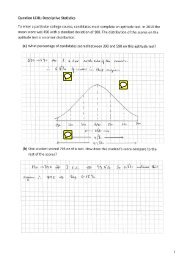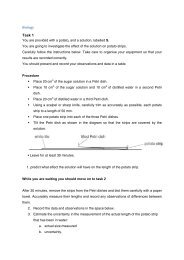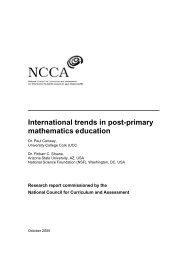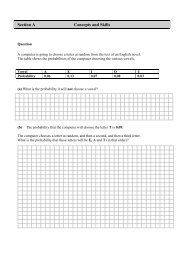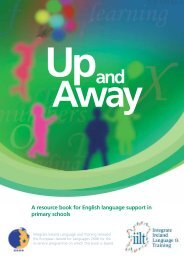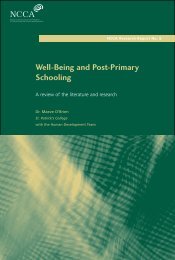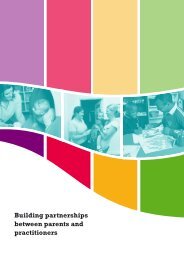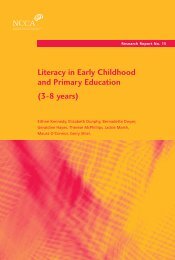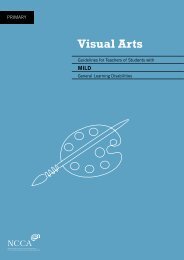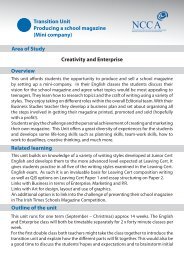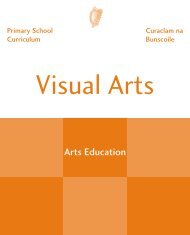Primary School Curriculum Curaclam na Bunscoile - NCCA
Primary School Curriculum Curaclam na Bunscoile - NCCA
Primary School Curriculum Curaclam na Bunscoile - NCCA
You also want an ePaper? Increase the reach of your titles
YUMPU automatically turns print PDFs into web optimized ePapers that Google loves.
Chapter 3 Key issues in primary education<br />
28<br />
Pluralism<br />
Equality and fairness<br />
of access<br />
Partnership<br />
The curriculum has a particular responsibility in promoting tolerance and<br />
respect for diversity in both the school and the community. Children come<br />
from a diversity of cultural, religious, social, environmental and ethnic<br />
backgrounds, and these engender their own beliefs, values, and aspirations.<br />
The curriculum acknowledges the centrality of the Christian heritage and<br />
tradition in the Irish experience and the Christian identity shared by the<br />
majority of Irish people. It equally recognises the diversity of beliefs, values<br />
and aspirations of all religious and cultural groups in society.<br />
A central aim of education is to ensure equality of opportunity for all<br />
children. Different factors, including socio-economic disadvantage, can<br />
impinge seriously on the child’s legitimate entitlement to educatio<strong>na</strong>l<br />
fulfilment. In the context of the general response of the educatio<strong>na</strong>l system<br />
to the inhibiting effects of such social and economic disadvantage and their<br />
implications for children’s learning, the curriculum offers the school and the<br />
teacher a flexible framework through which the learning requirements of all<br />
children may be addressed. It recognises, too, the importance of providing<br />
appropriate support, in the form of human and physical resources, and of<br />
curriculum adaptation to schools to e<strong>na</strong>ble them to satisfy the needs of the<br />
children they serve.<br />
Stereotyped expectations of gender roles can also inhibit the child’s<br />
educatio<strong>na</strong>l achievement. It is important that school and classroom<br />
planning ensure an equal educatio<strong>na</strong>l experience for both boys and girls<br />
and that teachers are consistently aware of their own expectations and<br />
assumptions in the day-to-day life of the classroom.<br />
One of the features of the design and construction of the curriculum has<br />
been the process of consultation through which it was produced and the<br />
participation and co-operation of all the relevant partners and interests in<br />
this process. These included parents, teachers, ma<strong>na</strong>gement bodies, the<br />
Department of Education and Science, third-level education, industry and<br />
the trade unions. It takes account, consequently, of the concerns and<br />
aspirations of a variety of interests and reflects a multi-faceted social and<br />
educatio<strong>na</strong>l perspective. Partnership and co-operation among ma<strong>na</strong>gement,<br />
parents and teachers will also characterise the successful planning and<br />
implementation of the curriculum in primary schools.



